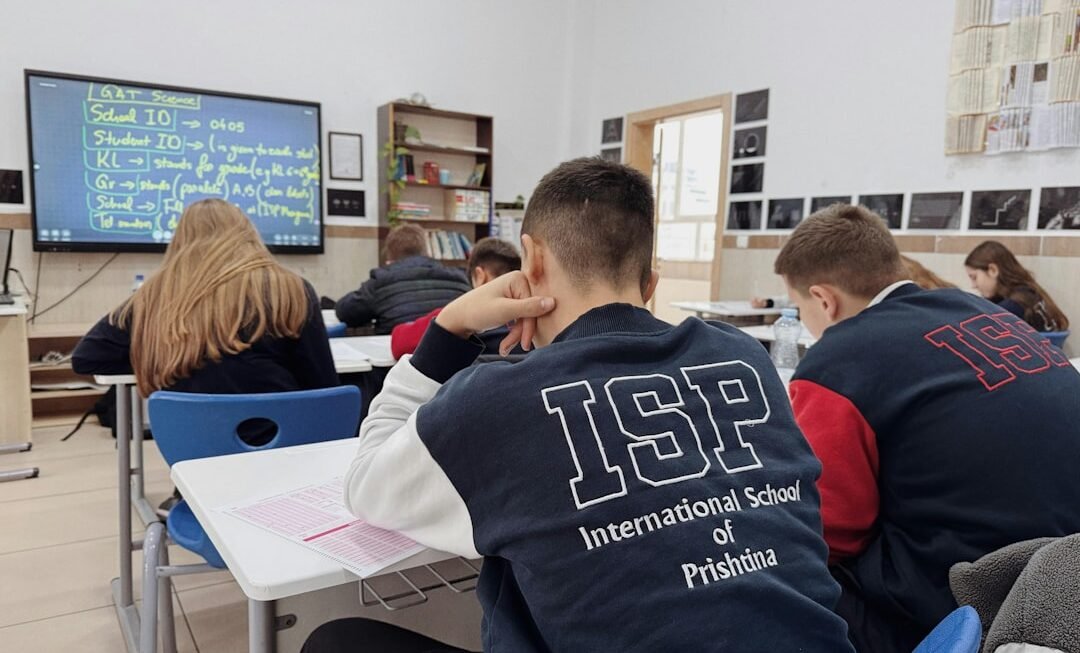In recent years, the educational landscape in Asia has undergone a significant transformation, largely driven by the advent of technology and the increasing demand for flexible learning solutions. Blended learning, which combines traditional face-to-face instruction with online learning components, has emerged as a prominent model in this context. Countries such as China, India, and Singapore have been at the forefront of this shift, leveraging digital tools to enhance educational outcomes.
The COVID-19 pandemic acted as a catalyst, accelerating the adoption of blended learning practices across the region. Schools and universities were compelled to pivot quickly to online platforms, leading to a newfound appreciation for the flexibility and accessibility that blended learning offers. The rise of blended learning in Asia is also influenced by the diverse educational needs of its population.
With large student bodies and varying levels of access to resources, traditional teaching methods often fall short in addressing individual learning styles and paces. Blended learning provides a solution by allowing educators to tailor their approaches, integrating multimedia resources and interactive content that can engage students more effectively. This model not only caters to the needs of urban students with access to technology but also extends opportunities to those in rural areas who may benefit from online resources that were previously unavailable.
Key Takeaways
- Blended learning is on the rise in Asia, combining traditional classroom teaching with online learning.
- The blended learning model involves a mix of face-to-face instruction and digital learning tools.
- Students in Asia benefit from blended learning through personalized learning, flexibility, and access to a wide range of resources.
- Challenges of blended learning in Asian education include digital infrastructure, teacher training, and ensuring equal access for all students.
- Implementing blended learning in Asian schools and universities requires careful planning, investment in technology, and support for educators.
Understanding the Blended Learning Model
Blended learning is not merely a combination of online and offline education; it represents a pedagogical shift that emphasizes student-centered learning. At its core, the blended learning model integrates various instructional methods, including direct instruction, collaborative projects, and independent study, facilitated through both digital platforms and traditional classroom settings. This approach allows educators to create a more dynamic learning environment where students can engage with content in multiple ways.
For instance, a typical blended learning course might involve students watching video lectures at home and then participating in hands-on activities or discussions in class. The model can be categorized into several types, including rotation models, flex models, and enriched virtual models. In rotation models, students alternate between online and face-to-face learning experiences based on a predetermined schedule.
The flex model offers more flexibility, allowing students to control their learning paths by accessing online resources as needed while still attending in-person sessions for support and guidance. Enriched virtual models provide a fully online curriculum with periodic face-to-face meetings, catering to students who thrive in a more autonomous learning environment. Each of these variations can be adapted to fit the specific needs of different educational contexts across Asia.
Benefits of Blended Learning for Students in Asia
One of the most significant advantages of blended learning is its ability to foster personalized learning experiences. In traditional classrooms, teachers often struggle to meet the diverse needs of all students simultaneously. However, blended learning allows for differentiated instruction, where students can progress at their own pace through online modules while receiving targeted support during in-person sessions.
This individualized approach is particularly beneficial in Asia, where classrooms can be overcrowded and resources limited. For example, a student who excels in mathematics can advance through online challenges while receiving additional help in subjects where they may struggle. Moreover, blended learning enhances student engagement by incorporating various multimedia elements into the curriculum.
Interactive videos, gamified assessments, and collaborative online projects can make learning more appealing and relevant to today’s tech-savvy youth. In countries like South Korea, where digital literacy is high among students, blended learning can leverage this familiarity with technology to create immersive educational experiences. Research has shown that when students are actively engaged in their learning process, retention rates improve significantly, leading to better academic performance overall.
Challenges and Limitations of Blended Learning in Asian Education
Despite its numerous benefits, the implementation of blended learning in Asia is not without challenges. One major hurdle is the digital divide that exists within many countries in the region. While urban areas may have robust internet infrastructure and access to devices, rural regions often lag behind, limiting students’ ability to participate fully in blended learning environments.
For instance, in India, while metropolitan cities boast high-speed internet and widespread smartphone usage, many rural schools still struggle with basic connectivity issues. This disparity can exacerbate existing inequalities in education and hinder the potential of blended learning to reach all students. Another challenge lies in the training and preparedness of educators to effectively implement blended learning strategies.
Many teachers may lack the necessary skills or confidence to integrate technology into their teaching practices. In some cases, professional development programs have not kept pace with the rapid evolution of digital tools and platforms. As a result, educators may find themselves overwhelmed by the demands of managing both online and offline components of their courses.
This lack of support can lead to inconsistent implementation of blended learning practices across institutions, ultimately affecting student outcomes.
Implementing Blended Learning in Asian Schools and Universities
The successful implementation of blended learning requires a strategic approach that considers both technological infrastructure and pedagogical frameworks. Educational institutions must first assess their current capabilities and identify areas for improvement. This includes evaluating internet connectivity, access to devices, and the availability of digital resources that can support blended learning initiatives.
For example, schools in Indonesia have begun partnering with tech companies to provide low-cost tablets and internet access to underserved communities, thereby enhancing their capacity for blended learning. In addition to infrastructure improvements, institutions must prioritize professional development for educators. Training programs should focus on equipping teachers with the skills needed to design effective blended courses that leverage technology while maintaining high standards of pedagogy.
Collaborative workshops that encourage teachers to share best practices and innovative strategies can foster a culture of continuous improvement within schools. Furthermore, involving educators in the decision-making process regarding technology adoption can lead to more effective integration of blended learning practices tailored to their specific contexts.
Best Practices for Integrating Online Teaching with Traditional Education in Asia
To maximize the effectiveness of blended learning, educators should adopt best practices that facilitate seamless integration between online and traditional teaching methods. One effective strategy is the use of flipped classrooms, where students engage with instructional content at home through videos or readings before coming to class for discussions or hands-on activities.
Another best practice involves fostering collaboration among students through online platforms. Tools such as discussion forums or collaborative document editing can enhance peer-to-peer interaction and support collective problem-solving efforts.
This not only builds teamwork skills but also prepares students for real-world scenarios where collaboration across geographical boundaries is increasingly common.
Case Studies of Successful Blended Learning Models in Asian Educational Institutions
Several Asian educational institutions have successfully implemented blended learning models that serve as exemplary case studies for others looking to adopt similar approaches. One notable example is the Singapore University of Technology and Design (SUTD), which has integrated blended learning into its curriculum by combining project-based learning with online resources. Students engage in collaborative projects that require them to apply theoretical knowledge while utilizing digital tools for research and presentation purposes.
This model has resulted in higher levels of student engagement and satisfaction. In India, the National Institute of Open Schooling (NIOS) has embraced blended learning as part of its mission to provide accessible education to diverse populations. NIOS offers a combination of online courses and face-to-face support through study centers across the country.
This approach has been particularly effective for adult learners who may have work or family commitments that make traditional schooling challenging. By providing flexible options for completing coursework, NIOS has successfully increased enrollment rates among marginalized groups.
The Future of Blended Learning in Asian Education
As technology continues to evolve and educational needs shift, the future of blended learning in Asia appears promising yet complex. The ongoing development of artificial intelligence (AI) and machine learning presents opportunities for personalized education on an unprecedented scale. Adaptive learning platforms can analyze student performance data in real-time, allowing educators to tailor instruction based on individual progress and challenges.
This level of customization could revolutionize how education is delivered across diverse contexts within Asia. Moreover, as global connectivity improves and more educational institutions embrace digital transformation, collaboration between schools across borders may become increasingly common. Initiatives that promote cross-cultural exchanges through virtual classrooms could enrich students’ educational experiences while fostering global citizenship.
However, it will be essential for policymakers and educators to address existing disparities in access to technology and training to ensure that all students benefit from these advancements. In conclusion, while blended learning presents numerous opportunities for enhancing education across Asia, its successful implementation will depend on addressing challenges related to equity, educator preparedness, and infrastructure development. As stakeholders continue to navigate this evolving landscape, a commitment to innovation and inclusivity will be crucial in shaping the future of education in the region.












